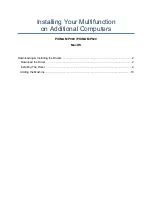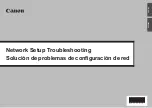
56
3.
Configure EF and the
maximum bandwidth.
queue ef bandwidth
{
bandwidth
[
cbs
burst
] |
pct
percentage
[
cbs-ratio
ratio
] }
N/A
Configuring WFQ
Step
Command
Remarks
1.
Enter system view.
system-view
N/A
2.
Create a traffic behavior and
enter traffic behavior view.
traffic behavior
behavior-name
The specified traffic behavior
name cannot be the name of any
system-defined behavior.
3.
Configure WFQ.
queue wfq
[
queue-number
total-queue-number
]
N/A
You can associate the traffic behavior that contains a WFQ action only with the default class.
Configuring the maximum queue size
Configure the maximum queue size and use tail drop.
When low-priority services preempt the bandwidth for the AF service, you can increase the queue
size for the AF service.
To configure the maximum queue size:
Step
Command
Remarks
1.
Enter system view.
system-view
N/A
2.
Create a traffic behavior and
enter traffic behavior view.
traffic behavior
behavior-name
The specified
traffic behavior
name cannot be the name of any
system-defined behavior.
3.
Set the maximum queue
size.
queue-length
queue-length
N/A
Check that the
queue
af
command or the
queue wfq
command has been configured before you
configure the
queue-length
command. Executing the
undo queue af
command or the
undo queue
wfq
command cancels also the
queue-length
command.
Enabling WRED
When you enable WRED, follow these guidelines:
•
Before enabling WRED, configure the
queue af
command or the
queue wfq
command.
•
The
wred
command and the
queue-length
command are mutually exclusive.
•
When WRED is disabled, other configurations under it are deleted.
•
The WRED configuration in QoS policies overrides the WRED configuration directly configured
on interfaces.
To enable WRED:
Step
Command
Remarks
1.
Enter system view.
system-view
N/A
2.
Create a traffic
behavior and enter
traffic behavior view.
traffic
behavior
behavior-name
The specified traffic behavior name cannot be
the name of any system-defined behavior.
















































